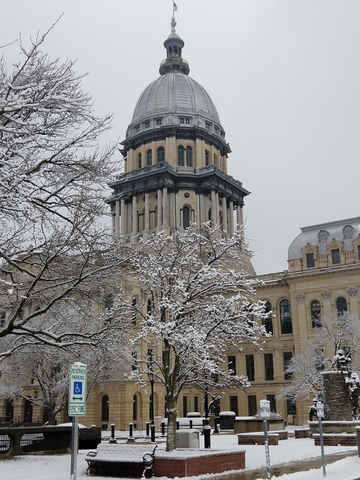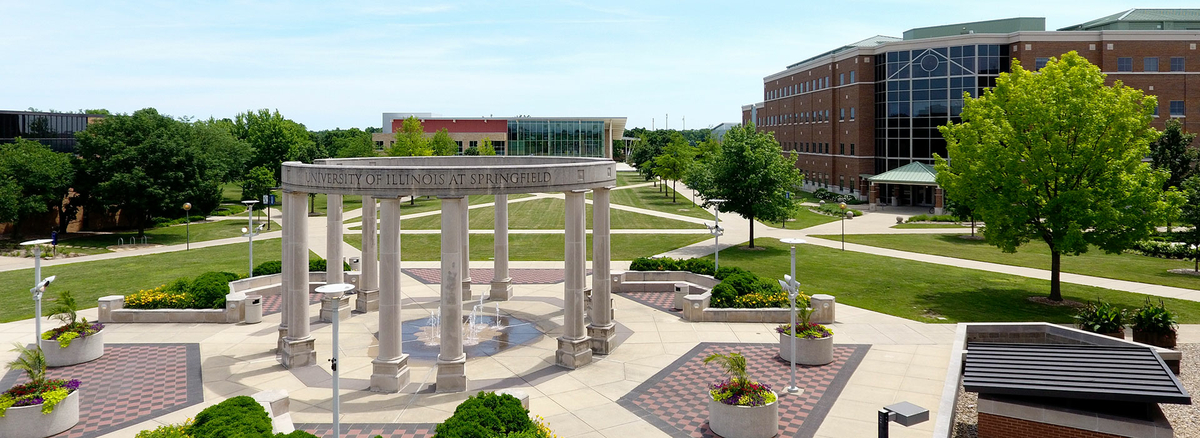
One of the basic tenets of governmental budgeting is that current services should be paid for with recurring revenues rather than one-time funds, such as debt. In a study of state budgeting practices, the Volcker Alliance rates Illinois as one of the three worst states in terms of relying on one-time budget maneuvers (Volcker Alliance, 2020). This practice pushes a portion of the costs of current services on to future taxpayers and makes it more difficult to balance the budget in future years.
This blog describes the types and magnitudes of debt that the State of Illinois has used to pay for current services and calls for a plan to stop this practice.
Budget Deficit
In November 2020, the Governor’s Office of Management and Budget (GOMB) estimated that the budget deficit for the general funds is $3.9 billion in the current year, which is about 9 percent of the $43 billion budget. The governor attributed about $2 billion of the deficit to revenue shortfalls due to COVID-19 and the remainder to structural issues (Rev, 2020). If no action is taken, GOMB estimated that the deficit in FY 2022 will be about $4.8 billion.
Continuation of the Past Practice of Borrowing
To address deficits in the past, the State of Illinois has often relied on borrowing from other funds that are intended to be used for a special purpose. The original FY 2020 budget included $150 million in interfund borrowing; however, the state borrowed an additional $323 million with the onset of COVID-19. The FY 2021 budget authorizes an additional $300 million in interfund borrowing. Based on state statute, this borrowing is to be repaid within 48 months.
Due to insufficient revenues, the state also has accumulated a substantial backlog of unpaid vendor bills. This in essence turns vendors into “lenders” and requires the state to pay an interest penalty. As of February 8, 2021, the state had about 38,000 unpaid vouchers, totaling $5.6 billion (Mendoza, n.d.). The bill backlog would be higher except the state has undertaken other types of borrowing to pay down the backlog, including a $6.0 billion bond issue in November 2017.
Recent Borrowing from the Federal Reserve
During the onset of COVID-19, the state deferred the state income tax filing deadline from April to July 2020. To address the resulting revenue decline in FY 2020, the state borrowed $1.2 billion from the Federal Reserve’s Municipal Liquidity Facility (MLF) program in June 2020. The state borrowed an additional $2.0 billion from the MLF program in December 2020. The state will need to repay the first loan by June 2021 and the second loan within three years. This borrowing has an upside in that it helps the state pay Medicaid bills, which allows the state to obtain federal reimbursement funds.
Lack of a Rainy Day Fund
Most states have a rainy day fund to help offset the financial impact of COVID-19 and mitigate the need for debt. However, as of the end of FY 2019, Illinois had the second worst funded rainy day fund in the country, with a balance of about $4 million (.01 % of expenditures). Nationwide, the median state rainy day fund balance as a percentage of expenditures was 7.9% as of the end of FY 2019 (National Association of State Budget Officers, 2020).
Conclusion
The state’s reliance on debt to help finance current services has led to the continuation of a structural deficit and the accumulation of debt. The governor and others have proposed revenue increases or adjustments, spending reductions, or other structural changes to address the deficit. These will be difficult decisions, but state elected officials need to put Illinois on a path to stop relying on debt to finance current services.
References
Mendoza, S. A. (n.d.). Backlog voucher report. Illinois State Comptroller. https://illinoiscomptroller.gov/financial-data/backlog-voucher-report-bvr/.
Governor’s Office of Management and Budget. (2020). Illinois economic and fiscal policy report. https://www2.illinois.gov/sites/budget/Documents/Economic%20and%20Fiscal%20Policy%20Reports/FY2021/Economic%20and%20Fiscal%20Policy%20Report%20FY21%20FINAL.pdf
National Association of State Budget Officers (2020). Fiscal survey of the states: Fall 2020. https://higherlogicdownload.s3.amazonaws.com/NASBO/9d2d2db1-c943-4f1b-b750-0fca152d64c2/UploadedImages/Fiscal%20Survey/NASBO_Fall_2020_Fiscal_Survey_of_States_S.pdf
Rev (2020). Illinois Gov. JB Pritzker COVID-19 press conference transcript December 15. https://www.rev.com/blog/transcripts/illinois-gov-jb-pritzker-covid-19-press-conference-transcript-december-15
Volcker Alliance (2020). Truth and integrity in state budgeting: The balancing act. https://www.volckeralliance.org/sites/default/files/attachments/Truth-and-Integrity-in-State-Budgeting-The-Balancing-Act.pdf

Beverly S. Bunch is a professor in the UIS Public Administration Department, with a joint appointment in the UIS Center for State Policy and Leadership. She conducts research on state and local government budgeting. She recently led a UIS research team that worked with the Volcker Alliance on a nationwide study on state budgeting. She has published in journals such as Public Budgeting & Finance, Municipal Finance Journal, and State and Local Government Review.
If you have questions, feel free to connect with us and request more information!



